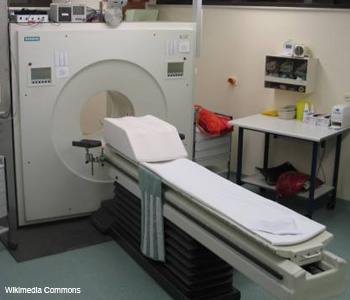
A typical positron-emission tomography facility.
May 21, 2012—A new positron-emission-tomography (PET) scan method for detecting prostate cancer and other diseases will be developed via a five-year, $2.6 million National Institutes of Health grant to Thomas Jefferson University’s Department of Radiology and the Kimmel Cancer Center in Philadelphia. The technique will enable more efficient identification and staging of cancer, reducing the need for confirmation biopsies.
Existing methods for prostate cancer detection, including ultrasound and magnetic resonance imaging (MRI), are effective but invasive biopsies are required for histologic confirmation.
The novel technology combines the use of PET scans with a novel imaging agent, the Cu-64 peptide biomolecule, which selectively seeks the biomarker VPAC1 that is overexpressed when prostate tumors are developing. The lead researcher of the study, Mathew Thakur, professor of radiology at Jefferson Medical College and director of the Laboratories of Radiopharmaceutical Research and Molecular Imaging, both at Thomas Jefferson University, previously studied Cu-62 peptides and their relationship to breast cancer in a preclinical study. His results, published in the 2009 Journal of Nuclear Medicine, revealed that in mice, 64Cu-TP3805 more accurately detected tumors overexpressing the VPAC1 oncogene compared to the usual 18F-FDG.
The researchers will use the NIH grant to test this new approach in mice and humans. They will analyze two Cu-64 peptides specific to VPAC1 in mice and perform a feasibility study of 25 pre-operative prostate cancer patients using the best Cu-64 peptide found in the mouse studies.
Over 65 percent of the 1.5 million biopsies conducted annually in the U.S. using standard diagnostic tools have a high false-positive rate and are associated with high morbidity rates and high cost. The new method holds promise as a noninvasive, more precise and reliable way to stage prostate cancer, detect recurrent disease and image metastatic lesions.
